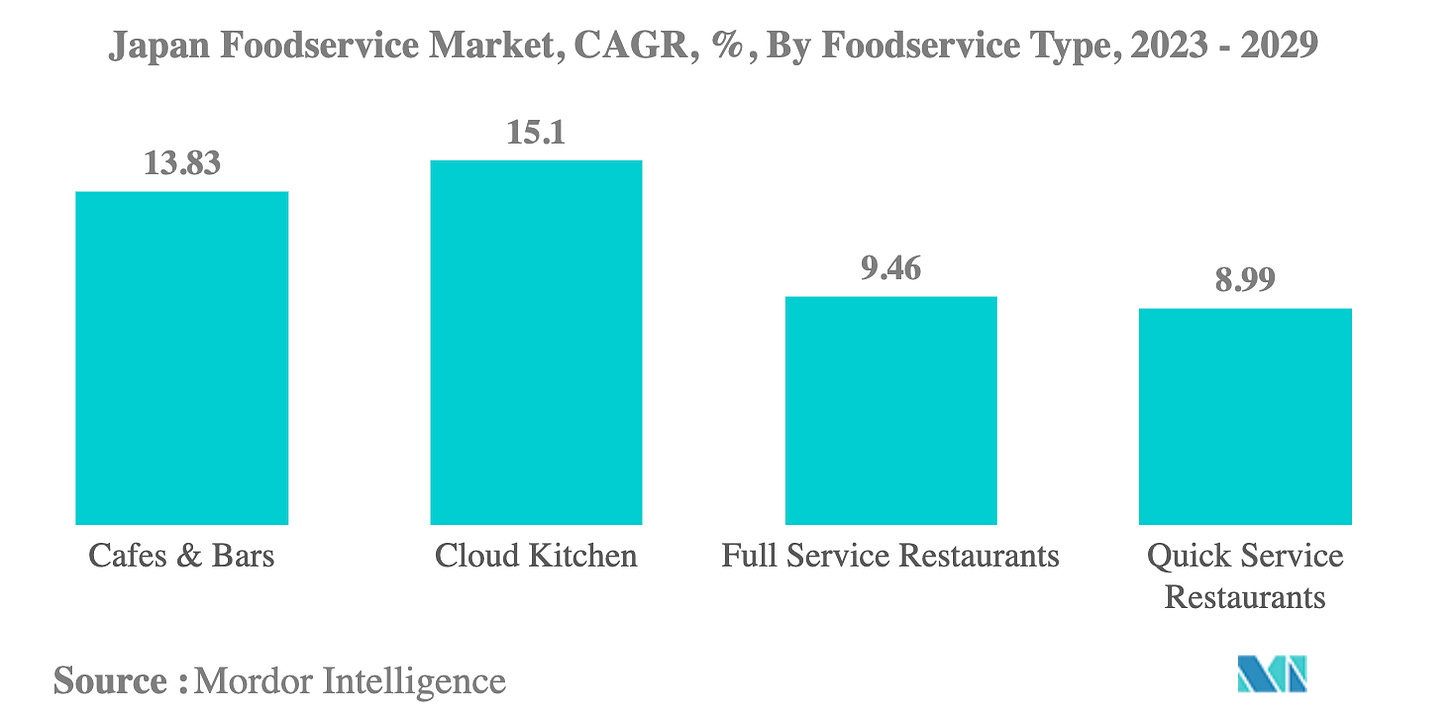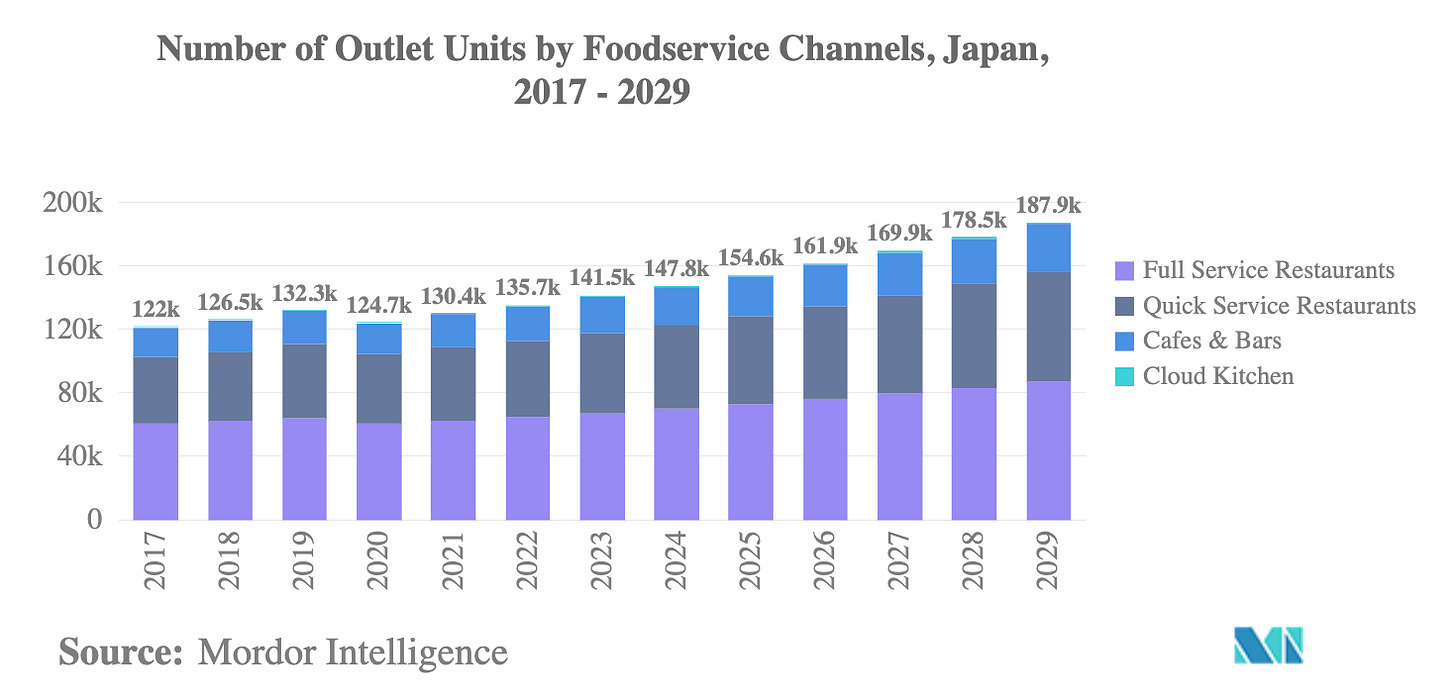Japan Foodservice Market: Trends, Segments & Growth
Japan, a country renowned for its rich cultural heritage and technological prowess, also houses a culinary landscape that is as diverse as it is vibrant. From the intricate taste of traditional Japanese cuisine to the bold flavors of international dishes, the epitome of food culture is found within the country's markets, stalls, and exquisite establishments. For business owners seeking to enter or understand this dynamic sector, a comprehensive overview is not just insightful—it's essential.
A Closer Look at the Market
Diverse Cuisines and Unparalleled Quality
The Japanese food service industry is a microcosm of culinary excellence where precision and quality converge. Renowned for its native cuisine, Japan's culinary scene has many options that reflect a harmonious blend of fresh produce, careful preparation, and attentive service with delicacies ranging from sushi to ramen and tempura to kaiseki, the market champion's meticulousness in technique and taste.
Michelin-Stars Galore
The Land of the Rising Sun proudly holds the world record for the highest number of Michelin-starred restaurants. Tokyo, the thriving metropolitan heart of Japan, is home to over 200 such establishments, continually pushing the boundaries of gastronomic innovation and customer experience. Pursuing excellence is not just an aspiration here; it's a standard.
Uncompromising Standards of Safety
In Japan, the robustness of the food service industry is underpinned by strict adherence to food safety regulations. Regular inspections by government bodies ensure that stringent standards are met across the board. The commitment to public health is unwavering, with establishments striving to maintain the highest levels of hygiene and safety for patrons.
Key Segments in Focus
Quick-Service Restaurants (QSRs)
With modern life moving at an exhilarating pace, QSRs have become a staple in Japan. Familiar brands such as McDonald's and KFC have successfully adapted to local tastes while catering to the need for fast, convenient dining options. These chains are not just popular; they're thriving, with an expected compound annual growth rate (CAGR) of nearly 9%, promising a robust future.
The Rise of Cloud Kitchens
Emerging as symbols of the digital age, cloud kitchens — delivery-only food establishments — are gaining significant ground in Japan. Fueled by substantial investments from domestic and international segments, these ghostly kitchens are becoming the culinary incubators of the future. Platforms like Cookpad are investing in the phenomenon, and international players such as Smart City Kitchen are venturing into the Japanese market, solidifying the cloud kitchen as a force to reckon with.
Full-Service Restaurants (FSRs)
While QSRs cater to the demands of a busy demographic, FSRs continue to flourish, benefiting from an aging population and a surge in tourism. The more controlled pace of full-service establishments dovetails perfectly with the preferences of an older clientele. Meanwhile, the influx of tourists scouring for authentic local fare further propels the growth of FSRs offering regional specialties.
The Engines of Growth
Catering to Modern Life
For many urban dwellers, the allure of QSRs is founded on convenience and affordability. With technology increasing in streamlining operations, these eateries have become indispensable to the fast-paced millennial and Gen Z lifestyles. The market keeps expanding, with new entrants continually shaping the narrative around what it means to dine in a hurry without compromising taste.
Global and Local Palates
One of the beautiful paradoxes of Japan's food service industry is the coexistence of global and local flavors. International franchises successfully appeal to cosmopolitan tastes, while local eateries proudly showcase the country's unique regional variations. This diversity isn't just appreciated; it's celebrated and forms an integral part of the sector's perpetual growth.
The Pursuit of Perfection
The Japanese quest for quality extends beyond polite society to their culinary realm. The market's growth is intricately linked to an unwavering commitment to sourcing the finest ingredients, utilizing cutting-edge cooking techniques, and presenting dishes that appeal to the palate and engage the senses. This relentless pursuit is a testament to Japan's dedication to culinary art.
Technology as a Catalyst
Japan's food service industry is not ignoring technology's rampant growth. Cloud kitchens, online delivery platforms, and state-of-the-art kitchen equipment are propelling change and expansion. Integrating smart solutions to enhance customer service and optimize production is the norm, ensuring that the market keeps up with consumers' rapidly evolving expectations.
In Conclusion
The Japanese foodservice market is a dynamic arena characterized by growth, diversity, and an unyielding dedication to customer satisfaction. Quick-service, full-service, and innovative cloud kitchen models contribute uniquely to this flourishing landscape. With an evident alignment toward quality, safety, and technology, Japan's culinary space is a testament to the country's gastronomic prowess and its ability to continually cater to the needs of a changing world. For those with an eye on the future, investing in or understanding this sophisticated market is a voyage into a world where the perfect bowl of ramen coexists with the latest advancements in food service.



